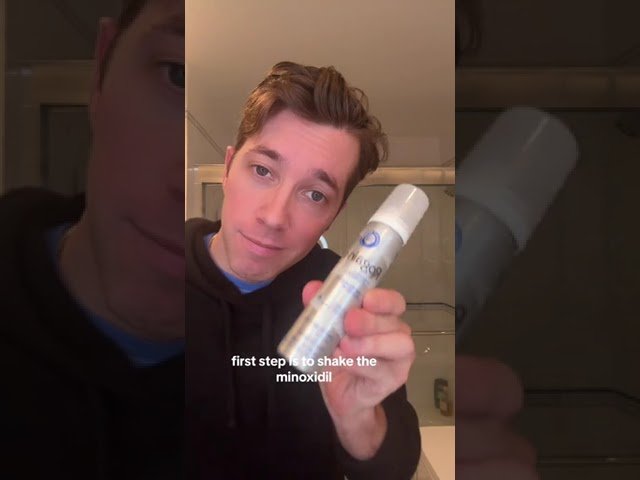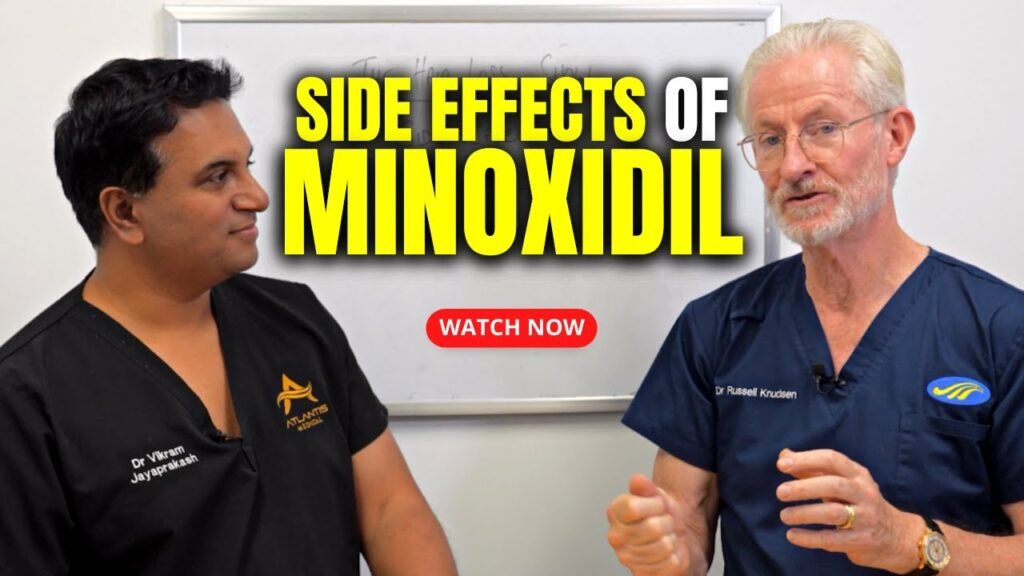What is Minoxidil and How Does it Work?
Minoxidil is a topical medication widely recognized for its effectiveness in treating hair loss. Originally developed as an oral medication for high blood pressure, it was discovered to have the unexpected side effect of hair growth, leading to its adaptation as a topical treatment for conditions like androgenetic alopecia. Available over-the-counter in various forms, such as solutions and foams, minoxidil is one of the most popular treatments for promoting hair regrowth in both men and women.
Mechanism of Action
The exact mechanism by which minoxidil promotes hair growth is not entirely understood, but several theories suggest how it might work. Minoxidil is believed to stimulate hair follicles by widening blood vessels and opening potassium channels, which enhances blood flow to the hair follicles. This increased circulation provides more oxygen and nutrients to the hair follicles, potentially revitalizing shrunken hair follicles and prolonging the anagen (growth) phase of the hair cycle.
Application and Results
When applied consistently to the scalp, minoxidil can help to slow down hair loss and even promote new hair growth in some individuals. Users typically need to apply the product twice daily for optimal results, and it may take several months to notice significant changes. Its important to continue using minoxidil to maintain any hair regrowth, as discontinuing use can result in the return of hair loss. While effective for many, results can vary depending on the individuals specific condition and adherence to the treatment regimen.
The Benefits of Long-term Minoxidil Use
Long-term use of Minoxidil, a popular over-the-counter treatment for hair loss, can offer several benefits for individuals struggling with thinning hair or androgenetic alopecia. One of the most significant advantages is its ability to stimulate hair regrowth by revitalizing shrunken hair follicles, thus encouraging them to increase in size and produce thicker strands of hair. This effect can be particularly beneficial for those experiencing gradual hair thinning, as it helps to maintain hair density over time.
Consistent Hair Growth
For those committed to the long-term application of Minoxidil, consistent hair growth is a notable benefit. Regular use over extended periods can result in a steady improvement in hair volume and coverage. Many users report that with continuous application, the newly grown hair becomes more resilient and less prone to shedding. This is especially advantageous for individuals seeking a non-invasive, ongoing solution to manage hair loss effectively.
Improved Hair Health
Beyond just promoting hair growth, long-term use of Minoxidil can also enhance overall hair health. Users often notice that their hair becomes softer, shinier, and more manageable over time. This improvement in hair quality can be attributed to the increased blood flow to the scalp that Minoxidil facilitates, which helps deliver essential nutrients to hair follicles. Consequently, this not only supports hair regrowth but also contributes to healthier hair.
Potential Side Effects of Using Minoxidil Over Time
Minoxidil is a popular treatment for hair loss, commonly available in topical formulations. While it is effective for many users, its important to be aware of the potential side effects that may occur with long-term use. One of the most commonly reported side effects is scalp irritation, which can manifest as itching, redness, or dryness. This can be particularly bothersome for individuals with sensitive skin, and it may require adjustments to the frequency of application or switching to a lower concentration of the product.
Another potential side effect of using minoxidil over time is the unwanted growth of hair in areas adjacent to where the product is applied. This is due to the nature of the medication, which can stimulate hair follicles not only on the scalp but also on the forehead or face if it inadvertently comes into contact with those areas. Users are advised to apply the product carefully and wash their hands thoroughly after each application to minimize this risk.
Long-term users of minoxidil may also experience changes in hair texture or color. Some individuals have reported that their hair becomes coarser or changes in shade after prolonged use of the treatment. Although these changes are generally considered cosmetic, they can be concerning for those who are seeking a natural look. Additionally, in rare cases, systemic absorption of minoxidil can lead to more serious side effects such as dizziness or an irregular heartbeat, especially if the product is used excessively. Monitoring any unusual symptoms and consulting with a healthcare provider can help manage these potential risks.
How to Use Minoxidil for Optimal Long-term Results
To achieve the best long-term results with Minoxidil, its crucial to use the product consistently and correctly. Begin by applying the recommended dosage, typically 1 ml, directly to the scalp twice daily. Ensure that the scalp is clean and dry before application to enhance absorption. Use your fingers to gently massage the solution into the affected areas, promoting better penetration. Its important to wash your hands thoroughly after each application to prevent the solution from spreading to unintended areas.
Consistency is Key
For Minoxidil to be effective over the long term, consistency is essential. Incorporate the application into your daily routine, possibly aligning it with morning and evening activities such as brushing your teeth. Missing doses can hinder progress, so setting reminders on your phone or using a daily checklist can help maintain regular usage. Its also beneficial to monitor your progress by taking monthly photos of the treated areas to visually track improvements and stay motivated.
Be Patient and Manage Expectations
When using Minoxidil, patience is vital. Hair growth is a slow process, and initial results might not be visible until after three to six months of consistent use. During this period, some users may experience shedding, which is a normal part of the hair growth cycle. Understanding that Minoxidil is not a quick fix but a long-term commitment will help manage expectations and encourage continued use, ensuring the best possible outcomes.
Frequently Asked Questions About Long-term Minoxidil Use
What Are the Long-term Effects of Using Minoxidil?
Minoxidil is a popular treatment for hair loss, but many users wonder about its long-term effects. Long-term use of minoxidil is generally considered safe, with most users experiencing continued hair growth and maintenance of existing hair. However, some individuals may experience side effects such as scalp irritation or unwanted facial hair growth. It is important to follow the recommended dosage and consult with a healthcare provider if any adverse effects occur.
Is It Safe to Use Minoxidil Indefinitely?
Many users are concerned about the safety of using minoxidil indefinitely. Studies have shown that minoxidil can be used safely for extended periods, provided that users adhere to prescribed guidelines. It is crucial to monitor any changes in your scalp or hair health and report these to your healthcare provider. Regular check-ins with a healthcare professional can help ensure that long-term use remains safe and effective.
Will Hair Loss Resume After Stopping Minoxidil?
One of the most common questions regarding long-term minoxidil use is whether hair loss will resume once the treatment is discontinued. Unfortunately, minoxidil does not provide a permanent cure for hair loss. If you stop using the product, it is likely that hair loss will gradually resume, returning to its pre-treatment state. For those seeking sustained results, continuous use is typically necessary.


